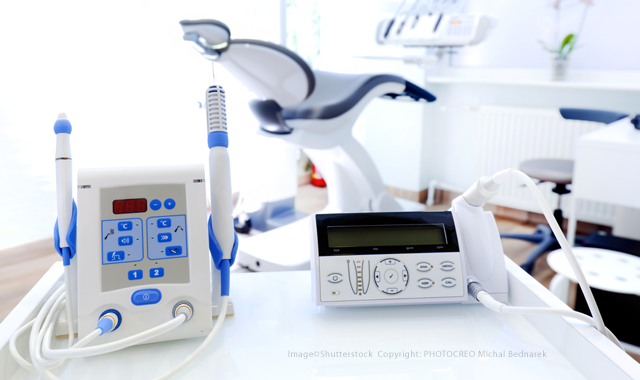5 reasons to revisit lasers for your dental practice
If you aren't currently using lasers in your practice, it's time to rethink your decision.

Since being cleared by the FDA for use in dentistry over 30 years ago, lasers covering a range of formats have been introduced with varying degrees of adoption.
In recent years advances in the core laser technology, improvement in the laser units themselves, and the expansion of dental applications are moving lasers into the mainstream of dentistry where daily use is becoming commonplace. If you are among the estimated 80 percent of dentists not yet offering laser dentistry here are five reasons to consider whether a laser should be in your near future.
Trending article: The benefits of a better laser
1. Flexible cost-effective lasers have proven their value in the operatory
Lasers of varying types including solid state lasers (NdYAG and ErYAG), gas lasers (CO2), and diode lasers have been increasingly used in dentistry over the last 20 years. Initial adoption was low for a variety of reasons, including large size requiring considerable operatory space, lack of user friendly features, limited procedural applications and prohibitively high prices. In the last five years Erbuim and CO2 lasers with both hard and soft tissue treatment capabilities have declined in price and can now be purchased for as low as $25,000. Diode lasers have become an easy choice for soft tissue procedures due to extremely small footprints, flexibility, greatly enhanced ease of use and dramatically lower pricing. Since being introduced in the 1990’s at $30,000 per unit, diode lasers can now be purchased for between $3,000 and $8,000 making the ROI clear.
2. Simple fiber management
Lasers cut and coagulate by focusing laser light energy which is converted into heat at the operative site. For example, diode units incorporate a fiber optic tip, which delivers the laser beam. These tips or fibers must be cut or changed from patient to patient to avoid cross contamination. Early versions were difficult to trim or change resulting in damaged fiber cables which interfered with efficient energy transmission. Now with high-quality powered retractable fiber cartridges in some models, and easy to-change disposable tips in others, it’s a simple matter to change or trim fibers insuring patient safety and maximizing cutting and coagulation efficiency.
Trending article: The top 10 tech trends defining the dental industry this year
3. Significantly improved ease of use
Issues of operatory space are being overcome with more compact models. While early lasers came with large floor-standing enclosures, many of the newer models offer sleek table top form factors (about the size of a toaster oven). Today’s lasers also incorporate intuitive displays allowing for easy control of functionality such as variable power settings, continuous or pulse modes of cutting, and procedure-specific presets. Some models even include touchscreen or iPod® touch interface which provide a familiar interface capable of delivering tutorials and training videos right to the unit. Small and compact wireless foot pedals, which are battery operated, provide additional ergonomics. Combined, these features make the lasers of 2017 much more dentist friendly than their predecessors.
4. Expanded clinical solutions
Probably the most significant advancement in lasers is in the variety of routine clinical procedures for which they are indicated. Treatments that would have once been referred out can now be done in-office. Procedures like tissue troughing, gingivectomies, crown lengthening, ulcer and cold sore treatment, orthodontic exposure of impacted teeth and implant uncovering can now be performed with less bleeding, quicker healing and improved patient comfort relative to traditional methods. Attachments on certain lasers can even provide TMJ therapeutic treatment or teeth whitening.
Trending article: Choosing a laser for your dental practice: A product roundup
5. Laser preparation for digital impression scanning.
Digital dentistry and digital workflow are at the core of discussions on the future of dentistry. The digital impression is becoming ubiquitous and will arguably evolve to become the standard of care in a matter of years. Lasers provide a “killer application” to aid in taking digital impressions. One of the biggest challenges with digital impressions is being able to take high quality digital scans that completely capture the margin. Creating a dry open area below the margin is critical. Without proper site preparation, digital impressions may not capture deep sulcus points.
This deficiency can result in a poor scan leading to ill-fitting restorations. Lasers are a fast and less traumatic modality for creating adequate space between the tooth and tissue required for a quality scan. Additionally, because the laser cauterizes the capillaries as it cuts, it naturally creates a stable, drier site. Blood and saliva are mortal enemies of the digital scan and will create distorted impressions. A laser can be seen as an important adjunct to your intraoral scanner and therefore to your digital workflow as a whole.